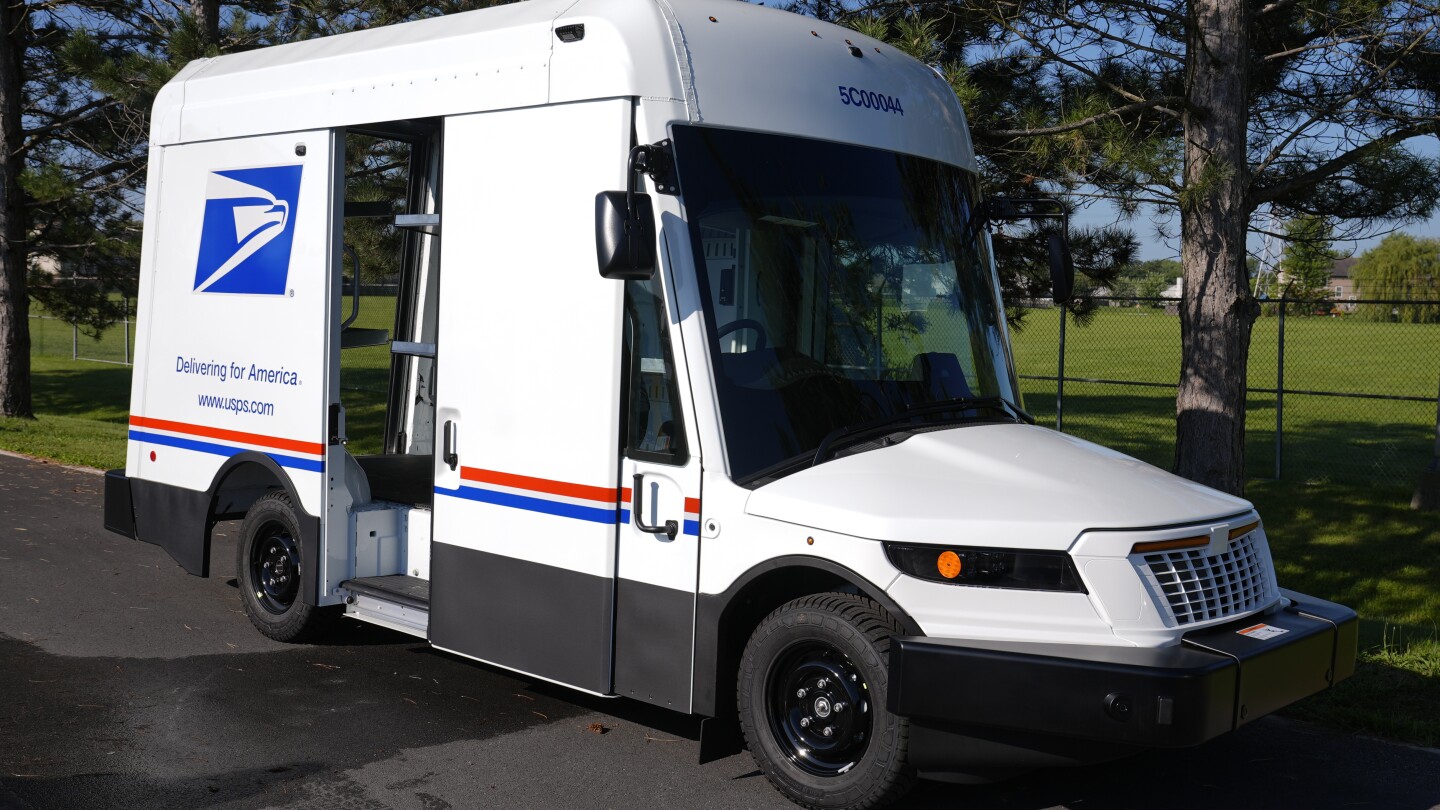The Postal Service’s new delivery vehicles aren’t going to win a beauty contest. They’re tall and ungainly. The windshields are vast. Their hoods resemble a duck bill. Their bumpers are enormous.
“You can tell that (the designers) didn’t have appearance in mind,” postal worker Avis Stonum said.
Odd appearance aside, the first handful of Next Generation Delivery Vehicles that rolled onto postal routes in August in Athens are getting rave reviews from letter carriers accustomed to cantankerous older vehicles that lack modern safety features and are prone to breaking down — and even catching fire.
Within a few years of the initial rollout, the fleet will have expanded to 60,000, most of them electric models, serving as the Postal Service’s primary delivery truck from Maine to Hawaii.
Once fully deployed, they’ll represent one of the most visible signs of the agency’s 10-year, $40 billion transformation led by Postmaster General Louis DeJoy, who’s also renovating aging facilities, overhauling the processing and transportation network, and instituting other changes.



What’s wrong with “off-the-shelf” electric vans?
I’m talking from the european point of view.
The inspector general of the postal service actually compared this next generation vehicle project with what foreign post offices do, in this report.
One of the big differences is that the US Postal Service wants to keep the vehicles in service for 18-20 years (while purchasing them over 12 years), instead of replacing them every 3-9 years as the European counterparts do. They think that the cost of ownership will be lower with custom vehicles on a maintenance plan and parts supply chain specific to them, rather than relying on commercial manufacturers regularly turning over their assembly lines. And maybe the volume (160,000 vehicle fleet) is sufficient to actually pull that off, economically.
The first thing that comes to mind is that if they’re custom they can put the driver seat on the right side, which makes stopping at mail boxes much easier. I don’t know of any non-import vehicles that are street legal in the US outside the USPS. It makes sense at this scale as well. A quick search shows that one line of cars, the Nissan Altima, sold just shy of 60,000 vehicles in a year. I don’t know if that’s a good benchmark for sales needed to make designing a vehicle worthwhile, but there are already 60-80,000 new USPS trucks ordered, and at that point since the designers would be working with one organization instead of trying to market to thousands of consumers it’s probably easy enough to build a custom car for that organization’s needs.
For rural deliveries, you need right side driver vehicles so the carrier can place mail into the mailboxes along the road. In the US, the standard is left side driver, so almost no vehicle company in the US has right side off the shelf.